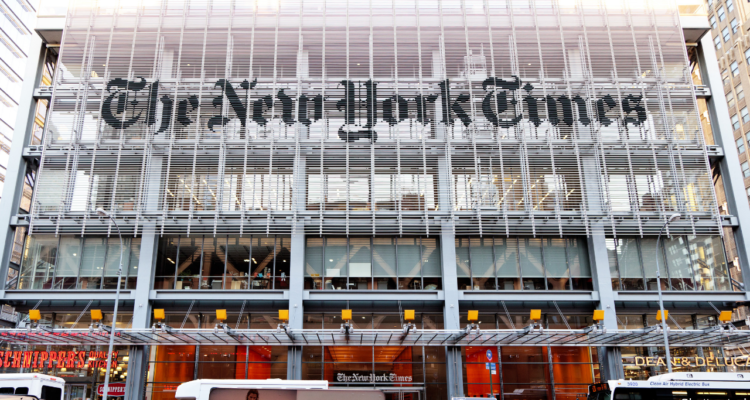At the Times—as at many other ostensibly liberal institutions—diversity is an all-important goal in some categories but not in others.
By Ira Stoll, The Algemeiner
The New York Times will try to add about 100 Orthodox Jews to its newsroom staff over the next five years.
At least, it will if its union’s diversity rhetoric is to be taken literally.
The New York Times unit of the NewsGuild of New York, the labor union that represents editorial and news employees at the New York Times as part of the Communications Workers of America, tweeted recently, “Our workforce should reflect our home: The Times should set a goal to have its workforce demographics reflect the makeup of New York City—24% Black and over 50% people of color—by 2025.”
The writer Ben Judah seized on the tweet to draw an implication that the union almost certainly did not intend:
“This is amazing! I fully endorse the request for 6% of New York Times employees to be orthodox/Haredi Jews. As a 500k strong community of 8.3m people in New York City, the orthodox/Haredi community is ready to serve at all levels of New York Times coverage and opinion,” Judah tweeted.
This is amazing!
I fully endorse the request for 6% of New York Times employees to be orthodox/Haredi Jews.
As a 500k strong community of 8.3m people in New York City the orthodox/Haredi community is ready to serve at all levels of New York Times coverage and opinion. https://t.co/1oqAy5OZg6
— Ben Judah (@b_judah) August 2, 2020
The Judah tweet was widely shared on the social media platform, drawing more than 1,400 retweets and 7,000 likes. Among those who retweeted it was former New York Times editor and writer Bari Weiss, who quit the newspaper last month complaining of “unlawful discrimination, hostile work environment, and constructive discharge.”
The Times claimed in March 2020 that it “employs 1,700 journalists — a huge number in an industry where total employment nationally has fallen to somewhere between 20,000 and 38,000.” Six percent of 1,700 would be 102. A 2011 study by the UJA-Federation of New York found “nearly half a million” Orthodox Jews in New York City, Long Island, and Westchester.
The Times has been widely faulted for what critics say is coverage biased against Orthodox Jews. The paper has blamed Orthodox Jews for the spread of the coronavirus and measles, has denounced the Orthodox for supposed welfare dependency, and has been waging a war on yeshivas, schools attended by Orthodox Jews.
It does seem reasonable, at least on the face of it, to think that the coverage would get better if there were a hundred Orthodox Jews in the New York Times newsroom rather than hardly any visible ones at all. Do not hold your breath for this hiring actually to happen, however. At the Times—as at many other ostensibly liberal institutions—diversity is an all-important goal in some categories but not in others.




